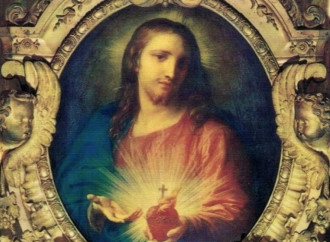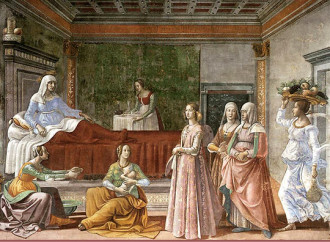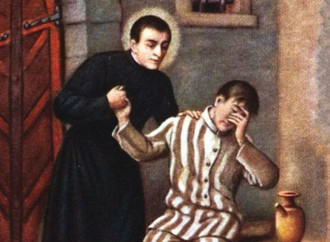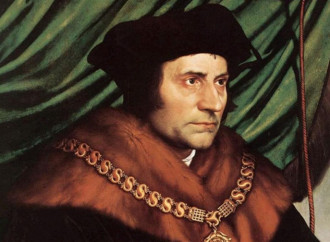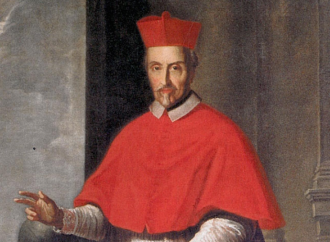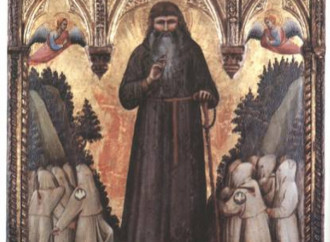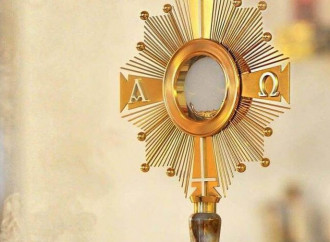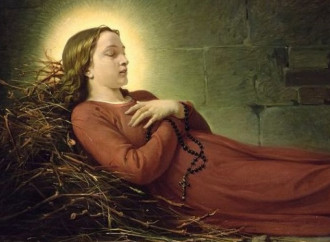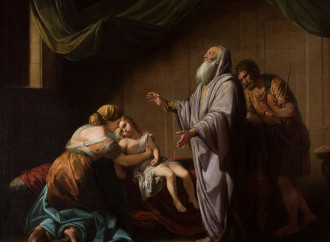Sacred Heart of Jesus
On 27 December 1673, on the feast day of St. John the Evangelist (the apostle who at the Last Supper laid his head on the breast of Our Lord to know who would betray Him), St. Margaret Mary Alacoque (1647-1690) had the first great revelation about the secrets of the Sacred Heart of Jesus, which filled her with His divine presence while the Visitandine (Visitation) nun was gathered in Eucharistic adoration.
Nativity of Saint John the Baptist
“What kind of child will this be?” (Lk 1:66). Together of course with Mary Most Holy, Saint John the Baptist is the only creature whose nativity the Church solemnly celebrates. It falls six months before the earthly birth of Jesus, the Son of God made man.
Saint Joseph Cafasso
He was a father to prisoners and convicts awaiting execution, showering them with love, inducing them to reconcile with God. He trained priests and saints, including St John Bosco who had him as spiritual director for 25 years and called him “model of priestly life”.
Saint Thomas More
When John Paul II proclaimed Saint Thomas More (1478-1535) patron saint of statesmen and politicians, he praised “his passion for the truth”. Pope Wojtyla recalled that the message of the English statesman, martyred under Henry VIII for having defended the freedom of the Church from the self-proclaimed religious supremacy of the king, “speaks to men of all times of the inalienable dignity of conscience”.
Saint Aloysius Gonzaga
How was it possible that Saint Aloysius Gonzaga (1568-1591), the brilliant first-born of a family of high nobility who was destined to become a marquis, decided resolutely to leave everything and follow Christ? To understand him, a good start could be the answer he gave to those who could not fathom how he could give up the marquisate: “I seek salvation, you seek it too! You can't serve two masters”.
Saint John of Matera
In northern Apulia, on Mount Gargano, less than ten kilometres from the Sanctuary of San Michele Arcangelo, stands the Abbey of Santa Maria di Pulsano, which was the seat of the Congregation of Pulsano Hermits, founded in the 12th century by St John of Matera (c. 1070-1139).
Saint Romuald
The first imperative in the life of the founder of the Camaldolese, Saint Romuald (c. 951-1027), was the search for God. And it is for this reason that he continually went in search of saintly solitude, founding hermitages and small monasteries in different parts of Italy, where he could cultivate the necessary prayerful meditation.
Saint Gregory Barbarigo
When in May 1656 Rome was struck by a terrible plague, Saint Gregory Barbarigo (1625-1697) had only been a priest for five months and had not yet turned 31. And yet Alexander VII, who knew his virtues well, put him at the head of the special commission that organised relief for the plague victims.
Saint Ranieri
Saint Ranieri (c. 1115-1160) was born in Pisa, the city of which he is patron saint, to a family of merchants. Despite the efforts of his parents to give him a Christian upbringing, he spent his early youth gallivanting with friends, ignoring the calls of his family to live more soberly.
Corpus Christi
“How did you extract a piece of a living heart from a person?” is the question posed in 2005 by Frederick Zugibe (1928-2013), an expert in forensic medicine and professor at Columbia University, after analyzing a fragment of a consecrated Host, which in 1996 had turned into bleeding flesh in the parish of Santa Maria in Buenos Aires...
Saint Germaine Cousin
Those who do not believe in Christ will consider St. Germaine Cousin (c. 1579-1601) an unhappy girl who led a meaningless life. Those who believe will instead see her as an exemplary image of the Crucified and Risen One, ready to share her sorrows and be clothed with His glory.
Saint Elisha
His name means “God is my salvation”. The prophet Elisha continued Elijah's mission at a dramatic time for Israel, marked by continuous infidelity to the Covenant on the part of the kings and the people, culminating in idolatry and the persecution of the prophets.

